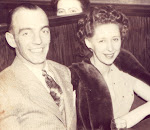An article in Sunday's
Washington Post tells the tale of how the Library of Congress will be able to display the first map of the United States. "The first map of the United States, created in 1784, has been purchased for the record price of $1.8 million by Washington philanthropist David M. Rubenstein, who is lending it to the Library of Congress."
This map is an original drawn by Connecticut resident Abel Buell and Rubenstein wants the LOC to display it for five years. He said "I just think Americans don't know enough about their history. Showing documents spurs them to learn more." I agree with this statement. Whether I am teaching beginners or advanced family historians, the ability to see a document connects them more fully to the document and time period. It also spurs them to find such documents that relate to their own ancestry.
The Christie's auction house website describes the map as "the first map of the U.S. published in America, the first map printed in America to show the flag of the United States and the first map to be copyrighted in the United States." That would be the NEW United States of America!
Rubenstein has purchased other historical documents and made them available for public viewing. The map had been put up for auction by the New Jersey Historical Society as a means of raising operating funds. I think we will see more historical societies, archives, and libraries employing such methods to keep them going in today's era of extreme lack of governmental support for historical organizations and libraries.
Click here to read the full article.
Click here to see the map description at Christie's auction house.
 I was at a Christmas party this evening and had a fun time. Then I came back to my apartment and have been having fun on my computer. The Wisconsin State Cartographer's Office has an online pronunciation guide to places all around the state. Not a written guide, but an audio presentation.
I was at a Christmas party this evening and had a fun time. Then I came back to my apartment and have been having fun on my computer. The Wisconsin State Cartographer's Office has an online pronunciation guide to places all around the state. Not a written guide, but an audio presentation.



+of+Bill+Feb+4+one.jpg)



